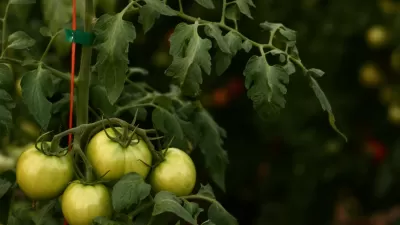An overlooked native plant has a lot going for it as a biofuel, and wouldn't take away from food production.
"Camelina is a wild-growing plant in dry portions of the American west and northwest that is gaining recognition for its potential for conversion to biodiesel. "First, it grows on land unsuitable for food crops. It has yields that are roughly double that of soy. The oil it produces is more cold-resistant than the average biodiesel feedstock. It tolerates cold climates well - it has been grown for years in pockets of Montana. It's supported by research and field trials at a number of land-grant colleges around the country - Oregon State, Montana State, Idaho among them. It grows wild in the US, which is to say it grows here, and grows well, and plays well with other crops. It has a particularly attractive concentration of omega-3 fatty acids that make camelina meal, left over after crushing, a particularly fine livestock feed candidate that is just now gaining recognition in the US and Canada"
Furthermore, camelina is unique for the role it plays in supporting existing agriculture: it "can be grown in a rotation of wheat crops. Farmers who have followed a wheat-fallow pattern, as is often seen in Washington and Oregon, can switch to a wheat-camelina-wheat pattern, realize up to 100 gallons of camelina oil per acre, and gain up to 15 percent more productivity on the wheat."
While camelina research is in the early stages, if it is the miracle plant that some advocates are claiming, it will have a substantial impact on American regional planning and agricultural practices."
Thanks to Franny Ritchie
FULL STORY: camelina, an advanced biodiesel “wonder crop”

Maui's Vacation Rental Debate Turns Ugly
Verbal attacks, misinformation campaigns and fistfights plague a high-stakes debate to convert thousands of vacation rentals into long-term housing.

Planetizen Federal Action Tracker
A weekly monitor of how Trump’s orders and actions are impacting planners and planning in America.

In Urban Planning, AI Prompting Could be the New Design Thinking
Creativity has long been key to great urban design. What if we see AI as our new creative partner?

King County Supportive Housing Program Offers Hope for Unhoused Residents
The county is taking a ‘Housing First’ approach that prioritizes getting people into housing, then offering wraparound supportive services.

Researchers Use AI to Get Clearer Picture of US Housing
Analysts are using artificial intelligence to supercharge their research by allowing them to comb through data faster. Though these AI tools can be error prone, they save time and housing researchers are optimistic about the future.

Making Shared Micromobility More Inclusive
Cities and shared mobility system operators can do more to include people with disabilities in planning and operations, per a new report.
Urban Design for Planners 1: Software Tools
This six-course series explores essential urban design concepts using open source software and equips planners with the tools they need to participate fully in the urban design process.
Planning for Universal Design
Learn the tools for implementing Universal Design in planning regulations.
planning NEXT
Appalachian Highlands Housing Partners
Mpact (founded as Rail~Volution)
City of Camden Redevelopment Agency
City of Astoria
City of Portland
City of Laramie



























